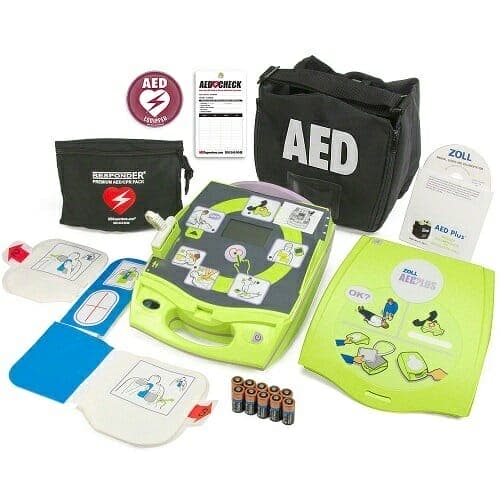The Hidden Cost of AED’s

Okay, let’s shoot straight here. We aren’t trying to scare anyone off from buying an AED by talking about the ‘hidden costs.’ AED’s are often more affordable than people think even with all considerations taken. However, similar to buying a car- if you haven’t done it before you might not realize the additional purchases that come along with a car. By all means, you still benefit from purchasing the item however it’s helpful to be prepared and able to make the purchase knowledgeably. You wouldn’t want a car without wheels and you probably don’t want an AED without the pads.
The Hidden Cost of AEDs 
Here’s what people do not realize- when you buy an AED the AED usually comes with pads and batteries that are required for it to operate. You are set for awhile. However, batteries and pads are parts that have an expiration date usually 2-5 years after purchase depending on the AED.
If you buy an AED because it was the cheapest, but the pads and batteries need to be replaced every two years over the course of eight years (the typical length of a warranty) you might actually be paying more for that product. Be sure to look at more than the cost of the AED but the cost of replacement pads and batteries. This can be exhausting, but we’ve already done the work for you. View our AED comparison chart here.
Cost of Accessories
Most people buy more than just an AED. A standard accessory, that we highly recommend, is a cabinet that you can put it on a wall. AED cabinets cost anywhere from about $120 to $250. The cost depends on what you get and what kind of bells and whistles you want on it. You can view our curated selection of cabinets here.

Additional accessories that makes sense to be stored with an AED are First Aid supplies. One that we recommend for Public Spaces is a ‘Bleeding Control’ kit. These kits will include the necessary items to stop bleeding emergencies.
A first responder kit is another great accessory. It’s a very practical kit that is usually contained in a small nylon pouch. Included are scissors, gloves, and a mask to do breathes.
There are a lot of different types of accessories that are available when you purchase an AED. More than likely you are going to want to purchase some of those as they can aid in the use of the AED.
Replacement Parts
Sometimes it is prudent to purchase replacement parts, such as batteries and pads, ahead of time. For example, facilities who routinely use their AED will want to have replacement parts on hand so their unit is not rendered inoperable from the time it’s used until replacement parts come in. This is most common in rehabilitation facilities or assisted living facilities. Other people that are traveling remotely or far away from resupply opportunities, purchase replacement parts for the event they need to use their AED.
It’s important to note that these items are sold with expiration dates based on when they were manufactured, not purchased. This is similar to carseats with an 8 year period of use before they expire. If the car seat was manufactured in 2015, it expires in 2023 regardless if it was purchased in 2015 or 2020 and regardless of use.
Program Management
Lastly, a final cost every AED owner should consider in ‘Program Management.’ Every AED that is purchased falls under state regulation. Of course, every state has slightly different regulations. However, every state does require a prescription to own an AED. Another basic requirement is that you keep a log of the AED’s use and maintenance to know if inspected that it’s in good standing. If you are not willing to meet these requirements on your own, you should purchase a program management software for the AED.
Program Management is almost always the best option for small and larger organizations with an AED. Many places experience employee or volunteer turnover in their facility and keeping up with the AED can be forgotten. AED Program Management will allow the responsibility to be easily passed from person to person without overwhelming or confusing anyone.
Furthermore, program management makes sure your investment in this lifesaving device is actually effective. The worst case with an AED is to have one during an emergency, and then find out it’s battery expired! No one should ever be in that position and program management helps ensure this.
Total Cost
To find your total cost of an AED, add up the following:
- AED New Unit Cost (Includes pads & batteries)
- Back up batteries
- Pediatric Pads (Most AED’s only come with adult pads)
- AED Cabinet
- AED First Responder Accessories
- AED Program Management
Final Considerations
The biggest takeaway when examining the hidden costs of an AED, should be to add up the cost of every item. Factor in the cost of additional accessories and services as well as itemized parts that need to be replaced over time. Look at more than just the face value of an item and take all things into consideration.
Again, this should not be overwhelming! We’ve done the work for you in our AED Comparison chart here.



